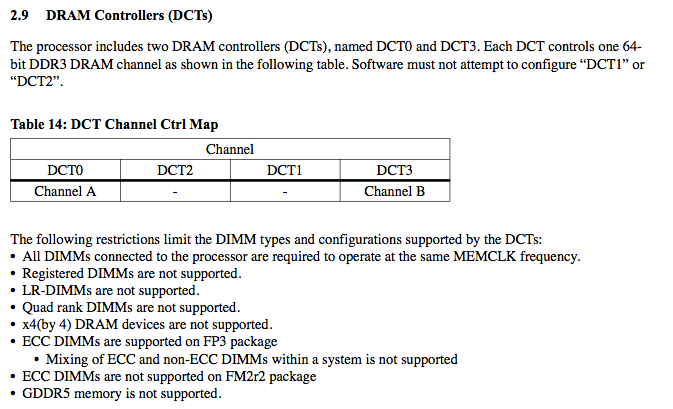- Joined
- Oct 9, 2007
- Messages
- 47,777 (7.41/day)
- Location
- Dublin, Ireland
| System Name | RBMK-1000 |
|---|---|
| Processor | AMD Ryzen 7 5700G |
| Motherboard | Gigabyte B550 AORUS Elite V2 |
| Cooling | DeepCool Gammax L240 V2 |
| Memory | 2x 16GB DDR4-3200 |
| Video Card(s) | Galax RTX 4070 Ti EX |
| Storage | Samsung 990 1TB |
| Display(s) | BenQ 1440p 60 Hz 27-inch |
| Case | Corsair Carbide 100R |
| Audio Device(s) | ASUS SupremeFX S1220A |
| Power Supply | Cooler Master MWE Gold 650W |
| Mouse | ASUS ROG Strix Impact |
| Keyboard | Gamdias Hermes E2 |
| Software | Windows 11 Pro |
AMD "Renoir" is the company's next-generation APU that improves iGPU and CPU performance over the current 12 nm "Picasso" APU. An AMD "Renoir" APU engineering sample running on a "Celadon-RN" platform prototyping board, was allegedly put through 3DMark 11, and its performance numbers surfaced on Reddit, in three data-sets corresponding with three hardware configurations. In the first one, dubbed "config 1," the CPU is clocked at 1.70 GHz, the iGPU at 1.50 GHz, and the system memory at DDR4-2667. In "config 2," the CPU runs at 1.80 GHz, and the iGPU and memory frequencies are unknown. In "config 3," the CPU runs at 2.00 GHz, the iGPU at 1.10 GHz, and the memory at DDR4-2667. Raw benchmark output from 3DMark 11 Performance preset are pasted for each of the configs below (in that order). The three mention 3DMark database result IDs, but all three are private when we tried to look them up.
The "config 1" machine scores 3,547 points in the performance preset of 3DMark 11. It's interesting to note here that the iGPU clock is significantly higher than that of "Picasso." In "config 2," a 3DMark performance score of 3,143 points is yielded. The CPU clock is increased compared to "config 1," but the score is reduced slightly, which indicates a possible reduction in iGPU clocks or memory speed, or perhaps even the iGPU's core-configuration. In "config 3," we see the highest CPU clock speed at 2.00 GHz, but a reduced iGPU clock speed at 1.10 GHz. This setup scores 2,374 points in the 3DMark performance preset, a 33% drop from "config 1," indicating not just reduced iGPU clocks, but possibly also reduced CU count. "Renoir" is expected to combine "Zen 2" CPU cores with an iGPU that has the number-crunching machinery of "Vega," but with the display- and multimedia-engines of "Navi."



View at TechPowerUp Main Site
The "config 1" machine scores 3,547 points in the performance preset of 3DMark 11. It's interesting to note here that the iGPU clock is significantly higher than that of "Picasso." In "config 2," a 3DMark performance score of 3,143 points is yielded. The CPU clock is increased compared to "config 1," but the score is reduced slightly, which indicates a possible reduction in iGPU clocks or memory speed, or perhaps even the iGPU's core-configuration. In "config 3," we see the highest CPU clock speed at 2.00 GHz, but a reduced iGPU clock speed at 1.10 GHz. This setup scores 2,374 points in the 3DMark performance preset, a 33% drop from "config 1," indicating not just reduced iGPU clocks, but possibly also reduced CU count. "Renoir" is expected to combine "Zen 2" CPU cores with an iGPU that has the number-crunching machinery of "Vega," but with the display- and multimedia-engines of "Navi."



View at TechPowerUp Main Site




